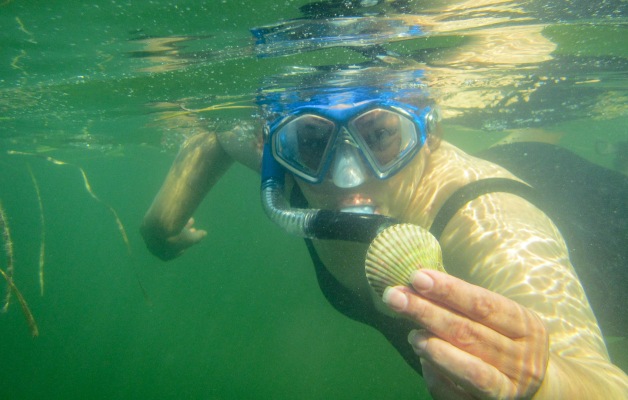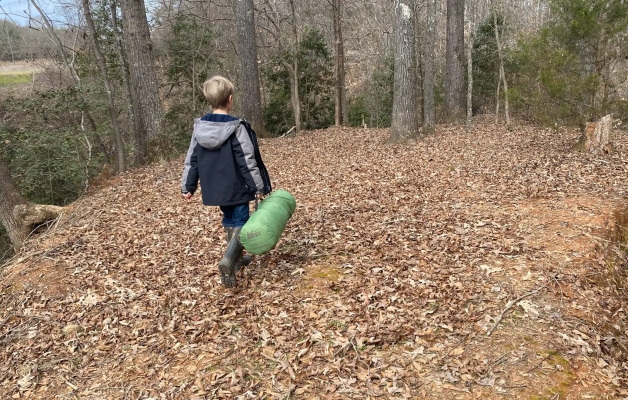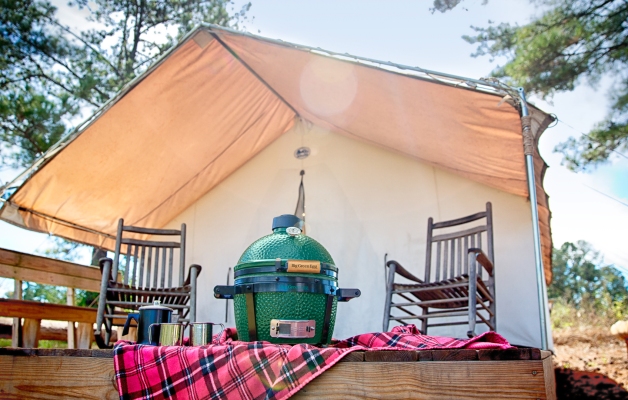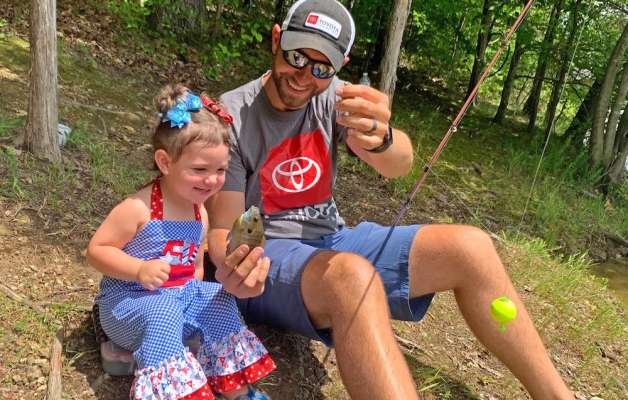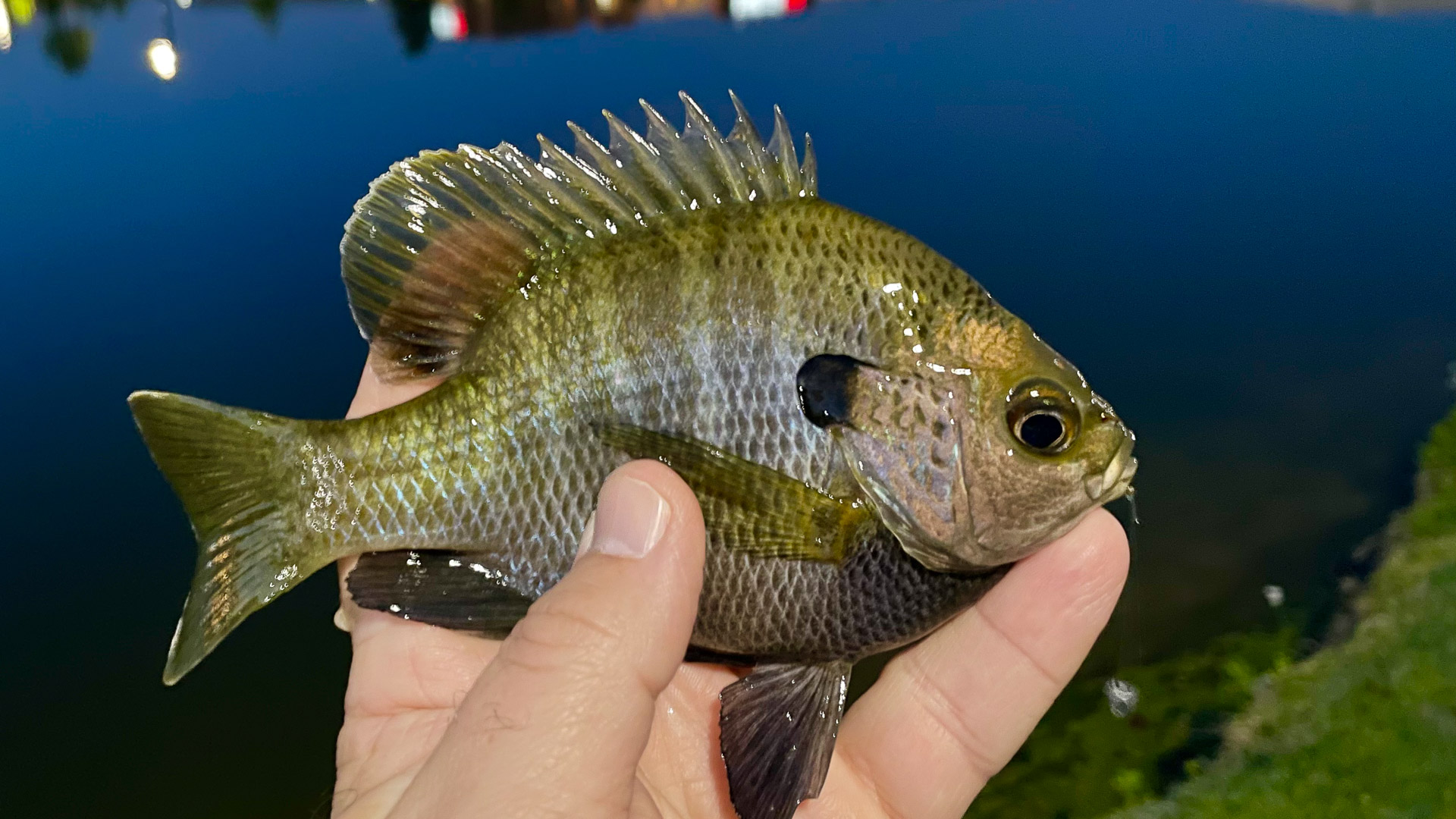
Day trips, attractions, must-see novelties — taking in local attractions is a big part of what makes travel fun. For a lot of us, that notion begins and ends with one question:
Where can we fish?
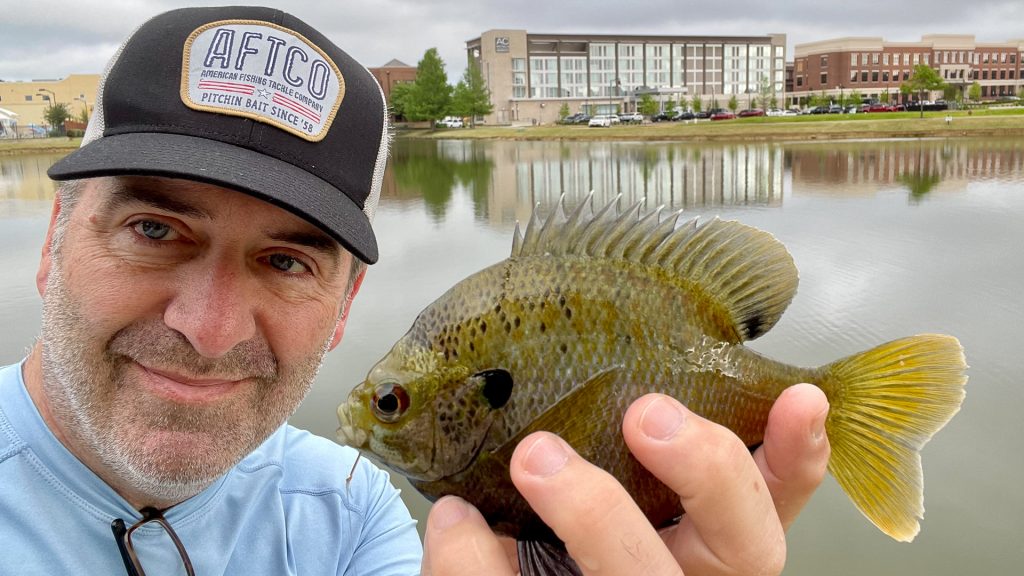
Even if you’re not a hardcore angler, water is magnetic; it’s where we stroll, walk the dog or just sit and enjoy sunsets and breezes. But let’s be honest: The first time you see that swirl, slurp and topwater splash, you’re wishing you’d brought a fishing rod.
We’ll note some travel-friendly rod/reel options in a moment, but for now, let’s look at one of the most common fishing options well within reach of most hotels, convention centers and tourist destinations: the retention pond.
Most are roughly rectangular, but forms can definitely vary. The clear distinction is the sharply angled sides, which allow for efficient runoff drainage and maximum storage.
Now, here’s the sweet part: Despite being man-made stormwater boxes, retention ponds more than a year or two old often hold catchable fish. Species will vary by location, but the common mix includes bluegill, largemouth bass, catfish and various minnows, all of which arrive through the drain systems, occasional floods and human stocking.
(State fisheries agencies typically do not condone unauthorized transporting of fish from one water body to another, as this risks the inadvertent spread of invasive plant and fish species, along with other ecosystem disruptions.)
Premise in practice
Case in point: During a recent work trip, Google Earth showed that I’d have several small ponds near my location. With one about the size of a football field tucked between my hotel parking lot, an apartment community and a commercial district, I’d have fishable waters literally right out the back door.
Spoiler alert: I caught a bunch of fish. But a brag session this is not. The takeaway comes from the fact that I didn’t simply stroll up to the edge and pluck fish after fish on random casts. Observation, analysis and adaptation are the building blocks of any angling mission, and that’s what guided mine.
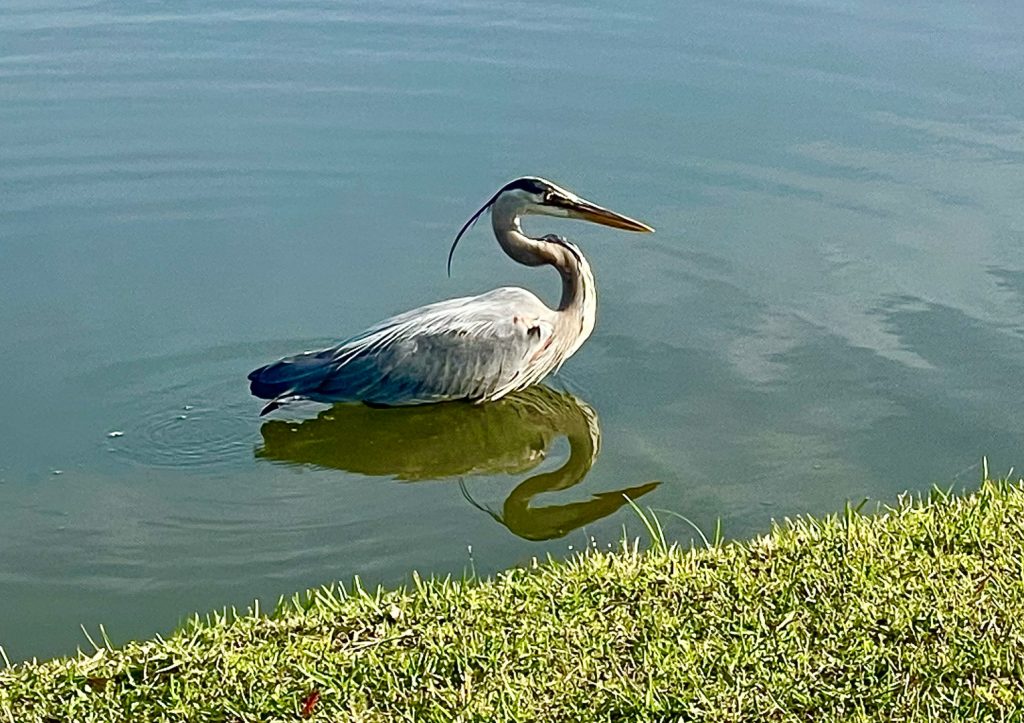
Bluegill were abundant and, while typically a curious lot — especially when they see regular foot traffic — these fish were superspooky. For one thing, I spotted a lot of bass activity and heard of another hotel guest catching a good one. These apex predators, plus several blue herons wading the shallows, had the bluegill running from the shoreline whenever anyone approached.
This wasn’t going to be easy, but dialing in the sweet spots and then engaging the panfish chess match is what kept my line tight.
Proceeding with the assumption of publicly accessible waters, or private ponds where you’ve obtained permission, consider how these points can guide your next travel fishing opportunity.
Find your fish
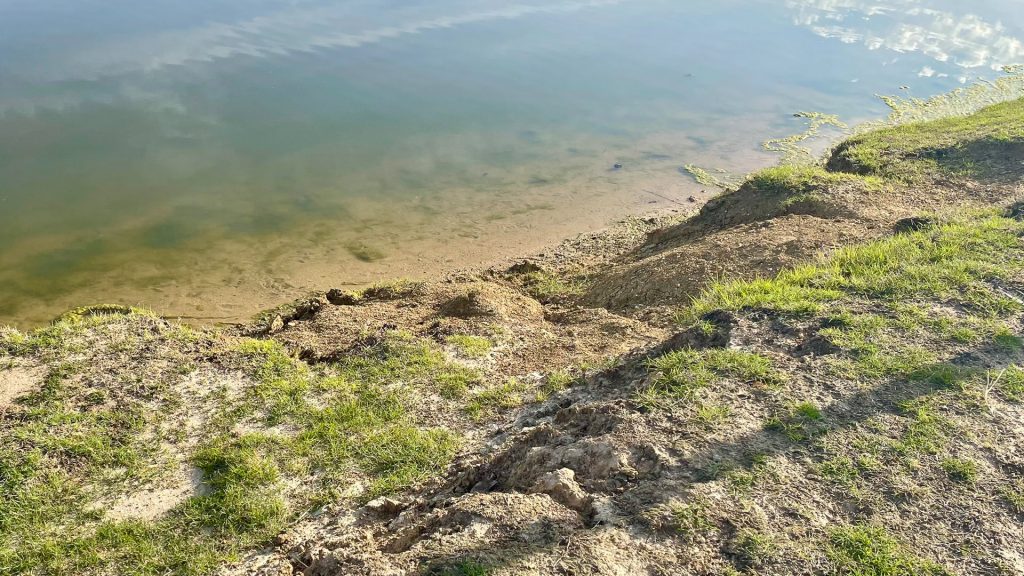
Once settled in my room, I set out for a preliminary scouting mission. With no familiarity, I started at the pond’s east end, simply because it was closest, but I quickly realized this was the shallowest section, and with the water level down — evidenced by two distinct erosion “steps” on the bank — this would be the area of least opportunity.
Strolling the entire pond’s perimeter sidewalk, I spotted several drainpipes, a common municipal feature for retention ponds, which contribute to stormwater management systems by collecting runoff from surrounding properties. I could tell these pipes linked to other ponds because I saw an otter disappear into one and a muskrat swim out of another.
Retention ponds vary in depth with seasonal weather patterns, but they’re usually dug pretty deep to ensure sufficient temporary storage during floods. This means there’s often sufficient depth to maintain fish populations year-round.
To prevent overtopping and local flooding, this retention pond’s southwest corner included an overflow dam that directed the water into a naturally flowing creek behind the treeline. In river-system reservoirs, the dam end is always the deepest, and that’s what I found in this pond.
On the northwest corner, a waterfront restaurant’s elevated seawall had a freshwater mussel bar at the muddy base. Such areas, where folks often feed ducks, always attract bluegill eager to grab their share.
I spotted several nice-size panfish here and around the base of the dam, but the restaurant area was busy in the evenings and I didn’t feel like dealing with restaurant staff that might decide to claim privacy. Besides, my instincts told me those drainpipes would deliver.
The strategy: Start about midpond where the depth increase was noticeable and find areas likely to hold the fish’s attention. Deeper water offers safety plus light and temperature moderation, so fish can move up or down in the water column to suit their needs.
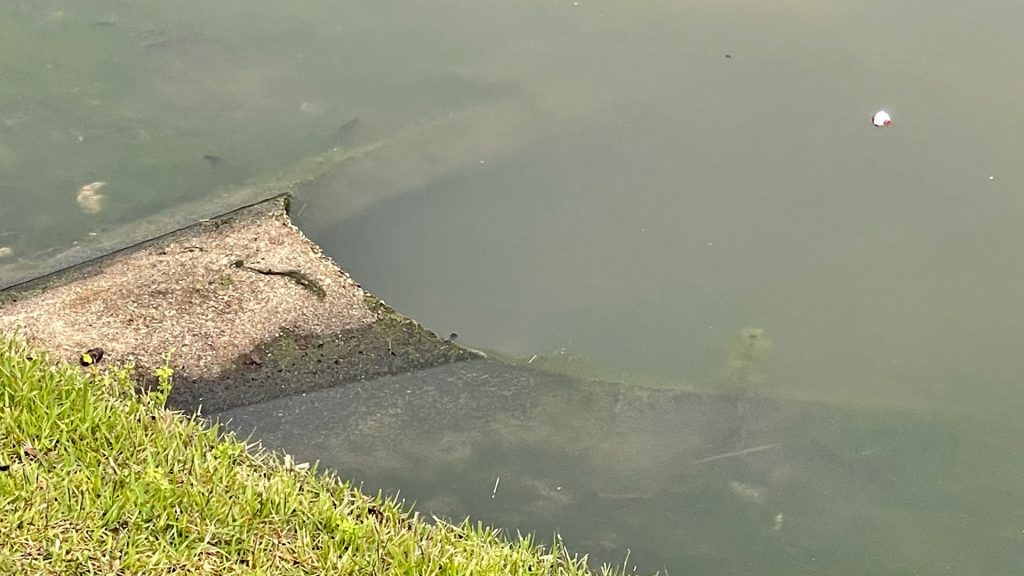
Drainpipes present concentrated areas of attraction because heavy flow carves out a distinct trench that remains even in dry times. These structures also provide feeding stations, with algae and various aquatic insects and invertebrates attracting baitfish and bluegill.
Game time
After looking at each of the pond’s eight drainpipes, I selected two particular spots — one on the north side and one on my southern location —with good depth, visible fish life and stable bank access. When my work schedule allowed a half-hour break, I ended up spending all my time on the closer pipe.
I’m sure the other one would have also produced, but when you catch a dozen bluegill on one spot — three of them as big as my hand — there’s no reason to leave. These fish were so fired up, I probably could’ve doubled my catch, but duty called and I used part of my time for notes and photos.
When I eased up to the pipe, I could see a big group of fry — bass hatchlings — huddling on one side. This told me I’d likely find the larger bluegill, which often eat bass fry. I also noticed several shadows moving around the pipe’s outer edge.
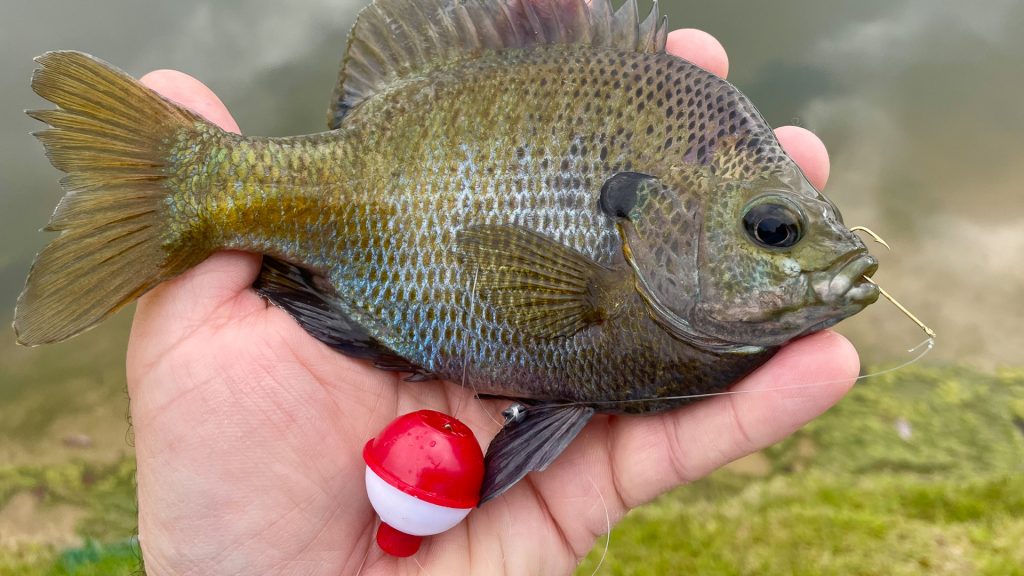
With the fish superskittish, I used a small clip-on bobber to minimize the intrusion. My first drop yielded a decent-size bluegill within seconds. That catch must’ve triggered the school because my next three drops found dozens of smaller fish actually attacking my float before one of them noticed the bait hanging 10 inches below.
After catching a handful of small to midsize fish, I extended my cast by about 3 feet and slid my clip-on bobber up the line for a deeper presentation. The results were immediate, as my biggest fish of the day yanked my bobber down and bent my ultralight rod like a willow branch.
Note: Generally, when you start catching small bluegill, you’ll continue catching them until you make a change. Depth is the first choice, but if the pond has any vegetation, try closer to that cover.
Parting points
The first night I fished was a spontaneous after-dinner decision. I hadn’t done much scouting yet, and with the sun well below the horizon, I had no natural light. The pond was mostly dark, except for the areas where lights from the adjacent businesses illuminated the surface. Fishing here allowed me to see my small bobber well enough to catch my icebreaker.
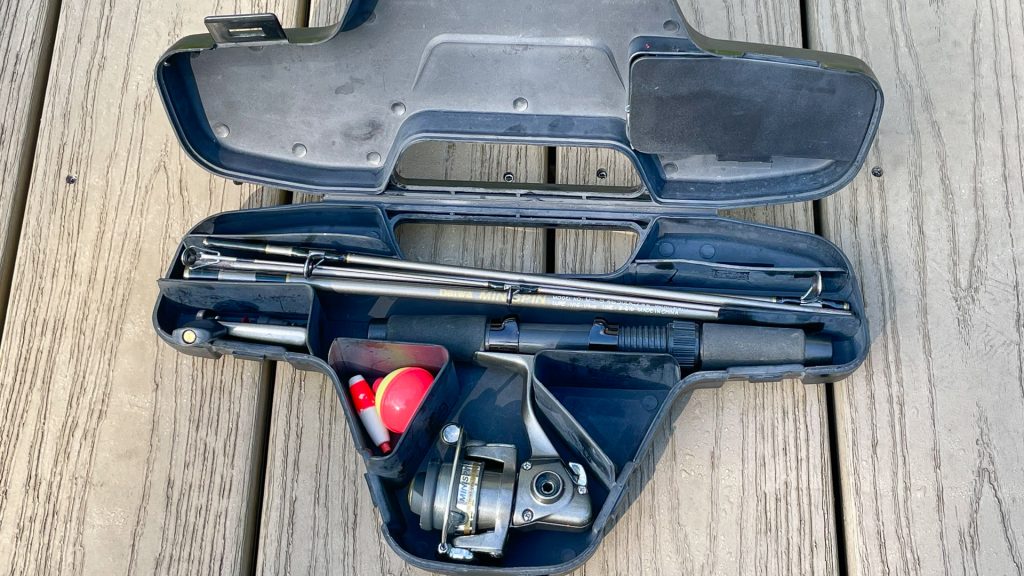
Travel Tackle: When space is limited, a compact travel rod/reel combo is your best choice. Options include telescoping rods like the Daiwa Travel Combo and multipiece kits like Okuma’s Voyager Travel Kit.
I used an older version of the Daiwa Mini Systems Kit, which includes a five-piece 4 1/2-foot light spinning rod and reel with a hard-shell carrying case. A molded hand grip makes it easy to carry, but I used a D-clip to secure the case to my laptop handle. The lightweight case swung a little while I was walking through airports, but I liked the hands-free system.
When flying, avoid TSA issues by putting all your hooks, lures, fishing tools and filet knife in checked baggage.
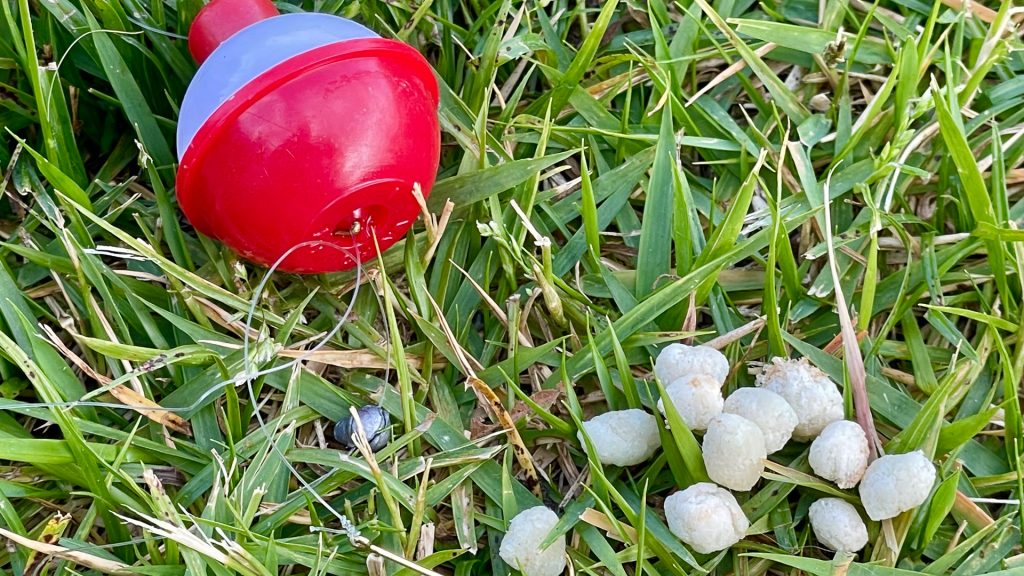
Bait and lures: Local bait and tackle shops can sell you all the worms and crickets you want, but if your time and/or budget is limited, you have options. Berkley PowerBait Panfish Nibbles are easily stored in baggage and carried in your pocket while fishing.
In my experience, bread balls are hard to beat. I prefer white bread because it’s usually softer and sticks to a hook better. Also, the lighter color is more visible in lower clarity.
If you’re the DIY type, homemade dough balls are most efficient, but a slice of plain white bread does just fine. Maybe save some bread from your sandwich or grab a slice from the hotel’s breakfast bar; just make sure it’s fresh and soft. Dry bread easily falls apart in the water.
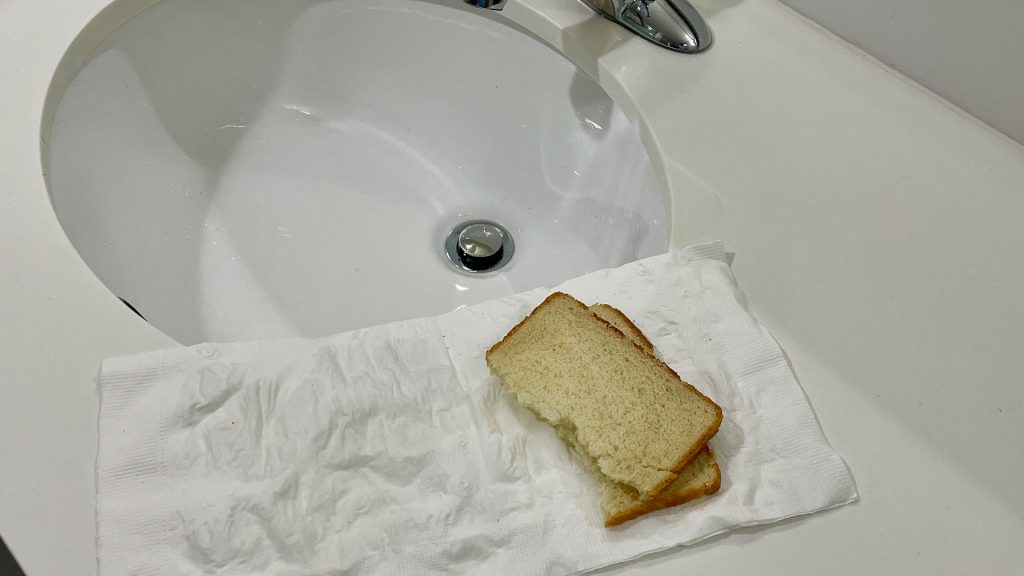
Tactical tips: If you have to hold a slice of bread for more than a couple of hours, air exposure will leave it dry and unusable. I found that wrapping my bread in an unfolded paper napkin dampened with a few drops of water kept it soft and suitable for panfish bait.
At the pond, I maximized my flurry of activity by making several bread balls. This eliminated downtime and allowed me to take advantage of feeding competition.
Freebies help: If the bite slows, or if you have trouble getting the fish going, try chumming — tossing unhooked bread balls into your fishing area to stimulate feeding. Use round chum balls for clear, sunny conditions when you can see them falling and note how quickly a fish grabs them.
In lower clarity, use flattened chum discs, which fall more slowly. This keeps them visible longer — for you and the fish.
Consider that ducks and turtles become conditioned to the sight of people throwing food into the water. Both can shut down your bite, while turtles often grab baited hooks — and that’s no fun.
Keep it clean: Wiping slimy hands on your clothes leaves an unpleasant smell you do not want in a hotel room or camper. Napkins or paper towels work, but I like to carry an actual hand towel. Sometimes, I use a discarded dish towel or bathroom hand towel, but various tackle and clothing manufacturers make “fish” towels with convenient belt clips.
A couple of convenient, lightweight options that I like are the PackTowl and Gamakatsu Micro Fiber Towel. The latter folds into a small pouch with a belt clip. Both are easy to pack and carry, and you can quickly rinse them in a hotel sink.
Fish care: Since we’re talking about travel fishing, we’ll assume most fish will be released. Small, light-wire hooks usually come out fairly smoothly, but flattening the barbs facilitates quick release.
Minimize stress and injury risk by holding your fish either by the lip or with a top-and-bottom grip. Start with your fingers and thumb around the snout, and move along the back and belly to fold down the dorsal fin for a safe, secure grip.
Avoid squeezing the belly or sides, don’t touch the eyes and be very careful around the gills. Release with a low, gentle drop into the water — no long-distance tosses, which may stun the fish and leave it vulnerable to predators.
Also, don’t release fish directly into the area you’re fishing, as this may agitate the others. Toss them away from your fishing area to minimize the disturbance and prolong the action. And be sure to take pictures of your travel catch.

